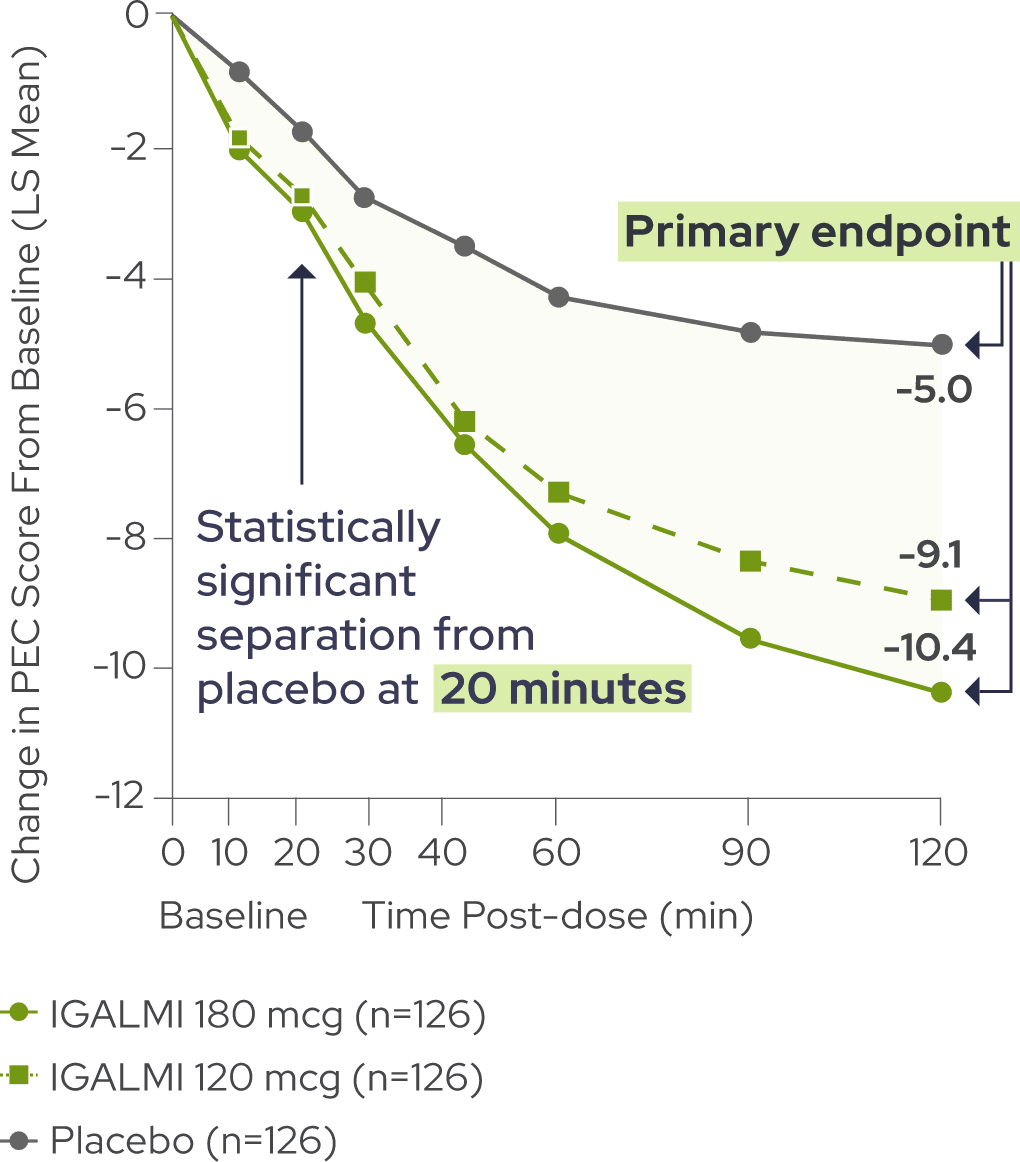In adults with schizophrenia or bipolar I or II disorder,
IGALMI SIGNIFICANTLY REDUCED AGITATION1
A statistically significant separation from placebo in agitation was seen in as early as 20 minutes1-3*
SERENITY I (schizophrenia)


SERENITY II (bipolar disorder)


PEC scale items measured1:
Excitement
Uncooperativeness
Tension
Poor impulse control
Hostility

